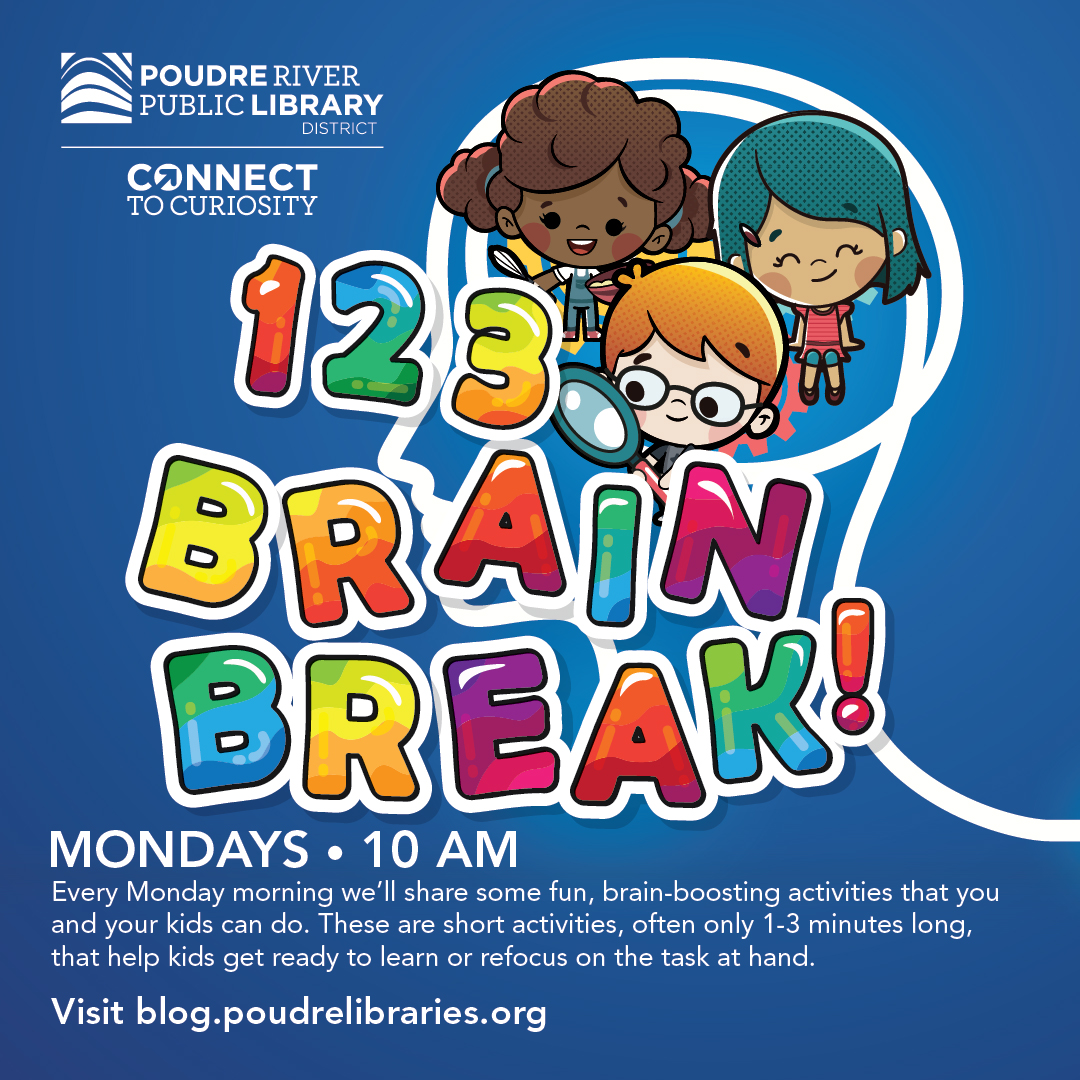Brain Breaks are short activities, often only 1-3 minutes long, that help kids get ready to learn or refocus on the task at hand. They often involve physical activity and movement though relaxing activities can also boost mental brain power.
So, in addition to encouraging your kids to participate in these fun breaks, join the kiddos and have some refreshing, stress-free fun yourself, too!
Supplies Needed:
Your body and a cleared space to move
Here’s what you do:
Find a space in your house where you can move around, like a hallway. The start line can be at one end of the hallway and the finish line can be at the other end.
- First, walk down and back.
- Then jog down and back.
- Then run down and walk back.
- Next, skip down and back.
- Then, skate down and back.
- Then hop down and back.
- Then hop on one foot down and hop on the other foot back.
- Now you’re ready to cool down so just walk down and back a few times, stretch and you’re done.
*If you don’t have space, you can do a lot of the same exercises in one place – walking, running, hopping, and jumping jacks. *Ask your physician before starting to exercise!
Challenge extensions:
Make an obstacle course
Obstacle courses are a great way to move and have fun. All you need is sidewalk chalk and your yard or your basement. Set up different areas with signs telling them what to do at each location. Make a start and finish line. Try 5-10 different exercises or games. Here’s some examples:
- Run backwards
- Bear crawl
- Crab walk
- Ice Skate trying to touch each mark on the grass or sidewalk
- Run through the ladder (can be made with chalk, in fact recommended)
- Hop scotch
- Side shuffle
- Inch worm
- Frog jumps
- Sprint to the finish line
The more the exercises are related to different animals, the better.
The “why” behind the challenge:
Regular exercise has lots of health benefits for children and young people, such as:
- improving fitness
- providing an opportunity to socialize
- increasing concentration
- improving academic scores
- building a stronger heart, bones and healthier muscles
- encouraging healthy growth and development
- improving self-esteem
- improving posture and balance
- lowering stress
- encouraging a better night’s sleep
Books for more fun:
The Busy Body Book: A Kid’s Guide to Fitness by Lizzy Rockwell
I Like to Exercise by Lisa M. Herrington

